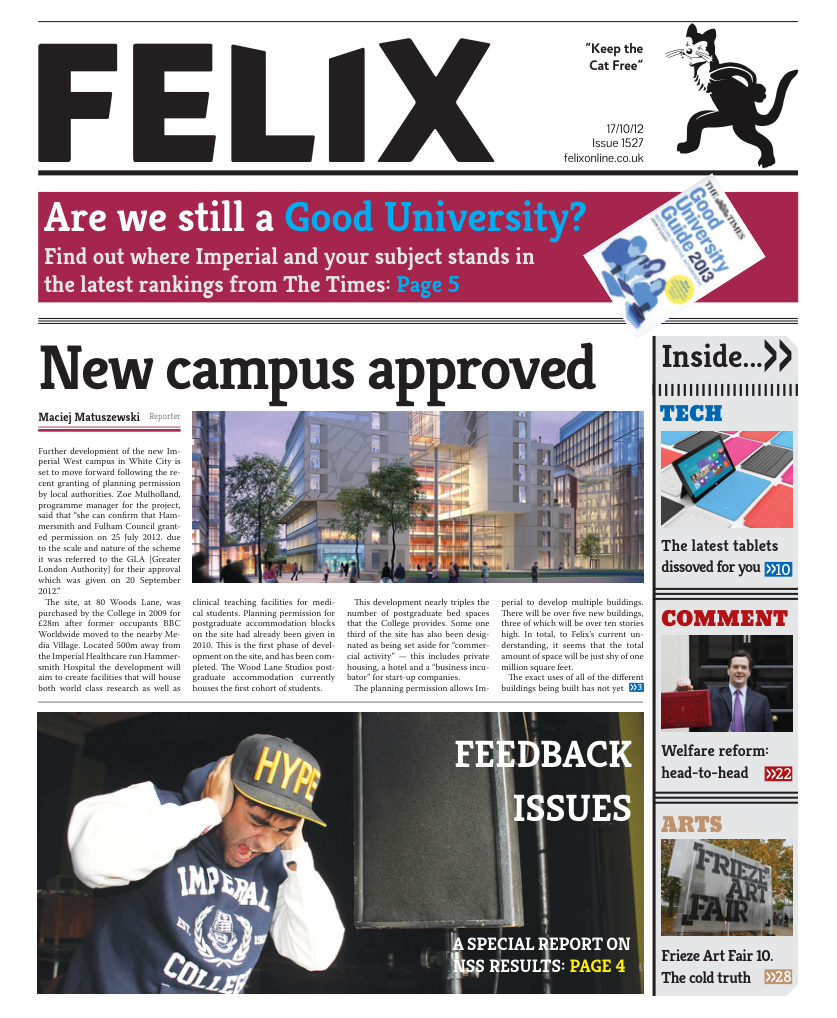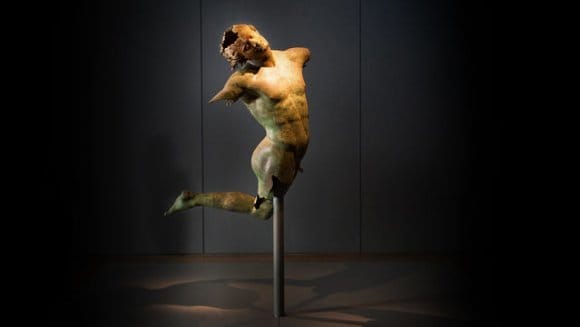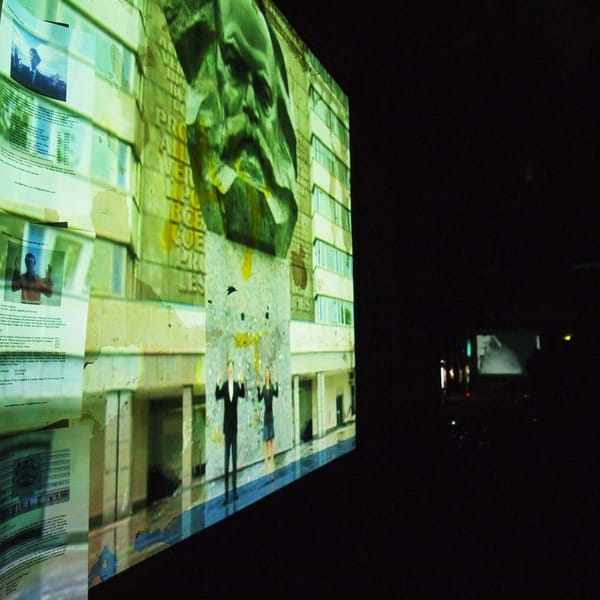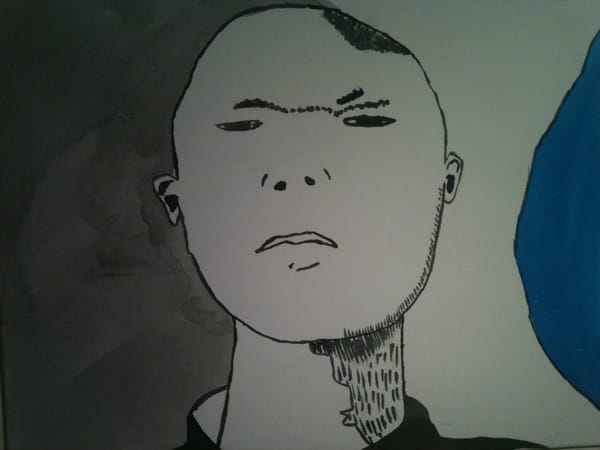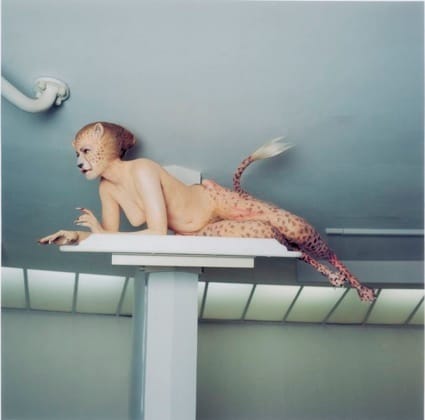Frieze Art Fair 10
Eva Rosenthal & Meredith Thomas pontificate on Frieze
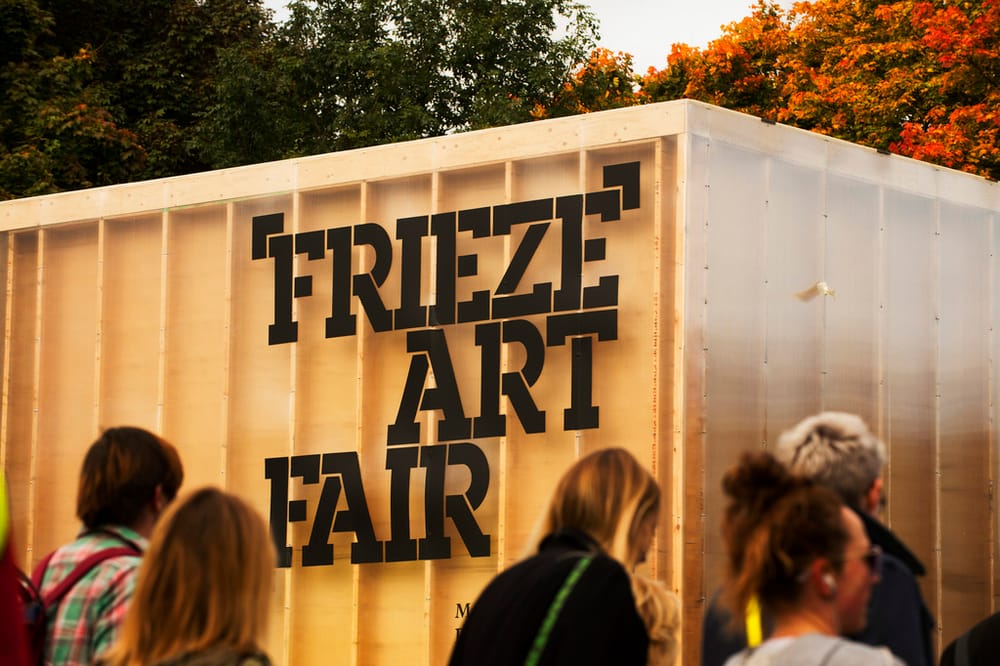
WTF is Frieze?
Frieze Art Fair, for those of you who have missed the press coverage, is big. It attracts over 60,000 visitors a year and generates enough acres of print to cover the enormous canopy in Regents Park housing the whole circus. Tickets sell out well in advance of the fair, which only lasts a few days. Every year the show kicks off hackneyed argument about the value of contemporary art and profiteering in the art world in general. This is the tenth London fair and nothing has changed.
Just so you get an idea of scale, 175 galleries attend the fair, with some big names that you will recognise, like White Cube, next to smaller galleries from across the globe. This year for the first time there were actually two fairs, with a second one dedicated to selling older artwork. While sales figure have not been released for six years, the last published value was £26 million. This is likely to be a huge underestimate of the revenue that will be generated in the coming weeks. Guesses for the total value of the art have been quoted at one and a half billion.
There are a few really big names; the Gagosian Gallery boasted artworks from Damian Hirst, Andy Warhol, Glen Brown, Jeff Koons. Most of the work however is from smaller galleries with artists you probably will not have heard of. The rich and famous weave their way through the crowds, their advisors struggling to stay in their way. Astronomical quantities of money are talked abut as though they were small change.
Frieze is a temple to commercial art. It is very difficult to block out the distractions and focus on the perennial questions. What on earth are you looking at? Is it really worth that much and you about to walk past something that will be hanging on the walls of the Tate and 30 years time.
We hated...
The best that can be said about most of the contents at Frieze is that is in some way decorative but there was much this did not possess even this lowly merit. Ross Knight’s Form of Togetherness (right) is the worst form of meaningless, ugly rubbish. The sculpture, made from patinated steel, iron, foam, twine, silicon and a massage tool stands as a testament the all that is bloated, ignorant and obfuscated in contemporary art.
I understand the place for conceptual art, taking seeming innocuous objects and placing them together in some way that they acquire meaning. What I do not understand is deliberately obscure, pretentious collections of literal crap.
The problem with much of the work that galleries had chosen to bring to the fiar was intended to be either pleasantly decorative or fit in with the zeitgeist. In other words, because everyone else was jumping on the bandwagon of a certain artist of approach, they were going to as well, regardless of actual merit. There was very little that showed and bravery of vision. Anything that was is lost in a sea of blandness.
This is hardly a surprise. Art is big business and London is currently vying with New York to be the art capital of the world. Frieze is the battlefield and art is the victim.
I was nonplussed by a yellow cubewith a barbecue on top and barbecue utensils hanging from the sides (see left). Completely, utterly, confused. I suppose that it is completely valid for a work of art to produce confusion as an emotion in the unsuspecting viewer. Nevertheless, combined with the cynicism I was already experiencing after a couple of hours of wandering around what must surely be one of the most clinical, soulless markets in the world, confusion led to a mere distaste. What was I looking at? Yellow is, coincidentally, one of my favourite colours. The cube was done in quite a warm, pleasant yellow, reminiscent of sunlight through some trippy sunglasses of mine. Was it representative of sunlight? Of blazing coals? Of the golden luck that those people able to own a barbecue experience? This train of thought took me to suburbia, America and the dads who love to grill surf n’ turf on Sunday evenings. Was the piece a representation of the banality, the platitudes, of this style of life? Of it slowly but surely turning into embers? Perhaps. But I’m grasping at loose ends here. In the end, it was just a barbecue mounted on yellow block.
This was okay
There were rays of light and plenty of good art scattered around amongst the dross. Yasumasa Morimura’s Self Portrait as Marcel Duchamp is great, clever and concise. Duchamp was famous for misappropriating other people’s work. This is exactly what Mormimura has made a career doing. She creates self portraits referencing a series of artists and artworks from history, some of which can be seen in the background of this image. Even the title is misleading as she takes the part of Duchap’s female companion in this image. Like good art the piece wraps up layers of meaning and questioning whilst retaining a striking and unique aesthetic.
Other personal favourites were Kevin Crosgrave’s beautiful paintings of workshops and Richard Patterson’s piece Male Nude. If you had some spare cash you also had the opportunity to take home a piece of Exhibition Road, with two small sculptures on sale from Tony Cragg.
Frieze Masters
There was a sober elegance in the disposition of space at Frieze Masters and many exquisite things on display. However, the art suffered from being sunk in the same market atmosphere that was present at Frieze itself. It was vaguely depressing to wander around the various galleries and find oneself unable to ignore the bored gallerists on their iPads. Nonetheless, there was a lot in the marquee that would have transcended the aura of money for even the most cynical of visitors. My favourite things, probably because they came as something of a surprise were two pieces by American conceptual and minimalist artist Sol Le Witt. He is perhaps most famous for his wall drawings, but at the Lisson Gallery, it was possible to see a sculpture of his; stacked white cubes forming a staircase – perhaps to a minimalist heaven? The second of his pieces, diagonal lines in four directions (on paper) was not only incredibly aesthetically pleasing, but also brought to an image of clarity and calmness after the madness of the fair. other piece, diagonal lines in four different directions on a small piece of pape

